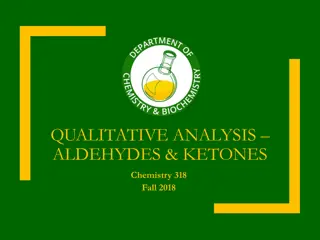Understanding Volume Measurements in Lab Experiments
Explore the world of volume measurements in laboratory settings, delving into the concepts of volume in both metric and imperial systems. Learn about factors to consider in liquid measurements, techniques for measuring liquids accurately, and the use of domestic measures in drug administration. Discover how specific gravity plays a role in determining substance weight and volume ratios.
Download Presentation

Please find below an Image/Link to download the presentation.
The content on the website is provided AS IS for your information and personal use only. It may not be sold, licensed, or shared on other websites without obtaining consent from the author. Download presentation by click this link. If you encounter any issues during the download, it is possible that the publisher has removed the file from their server.
E N D
Presentation Transcript
Lab. Lab.3 3 : Volume measurements : Volume measurements . .
VOLUME: means space that is occupied by a given amount of matter. Systems of measuring volume: 1- Imperial system example (fluid ounce, gallon, minims, fluid drachm) 2- Metric system example (litter, millilitre)
The relation between metric and imperial system 1 ml =16.23 Minims 1 gallon =3785 ml 1 fluid ounce =29.57 =30 ml=480 minim 1 fluid drachmae = 3.69 4 ml = 60 minims
Factors considering liquid measurements: 1- The choice of proper measuring vessel (it is not practice to measure small volume by large graduates). 2- The surface area of the liquid in the measuring vessel. The accuracy increases as the surface area decreases. 3- Density and surface tension of the liquid should be considered.
Technique of measuring liquid: 1- Pour the liquid from the bottle to the graduate cylinder. 2- The graduate cylinder is then raised to level of eyes to minimize the error in reading. 3- The liquid is poured into a graduate cylinder until the bottom of the meniscus exactly reaches the required mark. 4- We measure the amount of liquids by volume although there are exceptions, some liquids measured by weight as (glycerin, acids, and oils) so we convert this weight to volume by specific gravity.
Domestic measure: These are the measure usually used at home for administration of drugs. They are always extremely inaccurate and depend on the shape of the measure: Teaspoonful = 5 ml Dessertspoonful = 8 or 10 ml Tablespoonful = 15 ml Coffee cupful = 30 ml Tea cupful = 120 ml Glassful = 240 ml
Specific gravity Is the ratio expressed decimally of the weight of substance to the weight of an equal volume of substance chosen as standard, both substances are at the same temperature. Water is used as standard of sp. gr. of liquids and solids.
Glycerin Is a polyhydric alcohol obtained by the saponification of fats. It is miscible with both water and alcohol; it is an excellent solvent for tannins, phenols, and boric acid Preparations in which glycerin is the solvent are called Glycerides. In its concentrated form glycerin acts as a preservative that prevents the growth of bacteria and mold. It has a sweet taste so it is used in some of the syrups especially those made with Dextrose. It s frequently used in ear drops because it softens wax due to its softening property.
Example: Weight of glycerin = 12 g and its specific gravity = 1.26 so the volume will be 9.5 Experimental work: Measure teaspoonful and tablespoonful and write the experimental volume. Then find the percentage of error. Teaspoonful = 5 mL Experimental value = 5.8 mL 5.8-5= 0.8 mL Percentage of error = ?.? ???% ? Percentage of error = 16 % = 16 %























